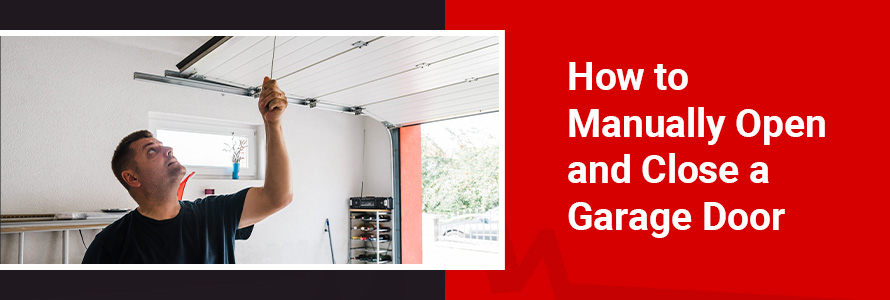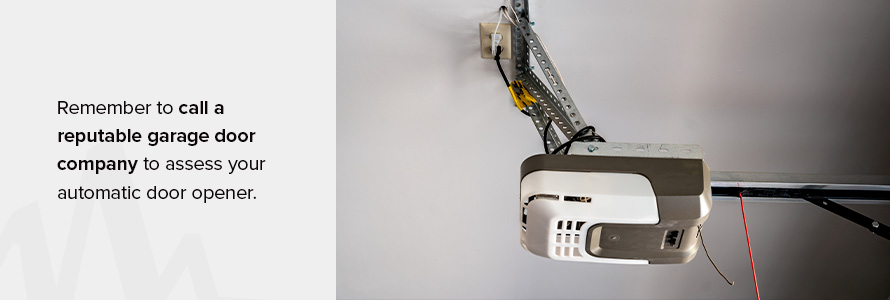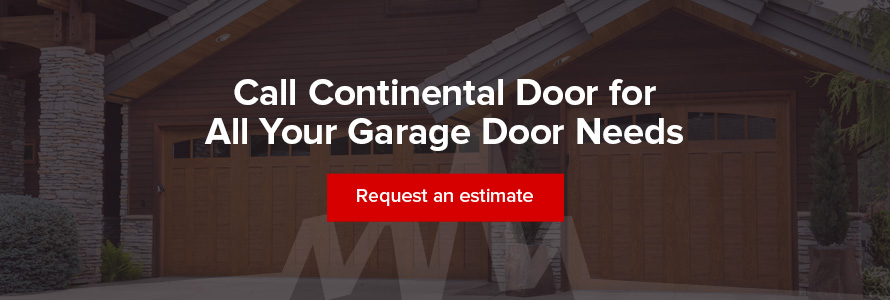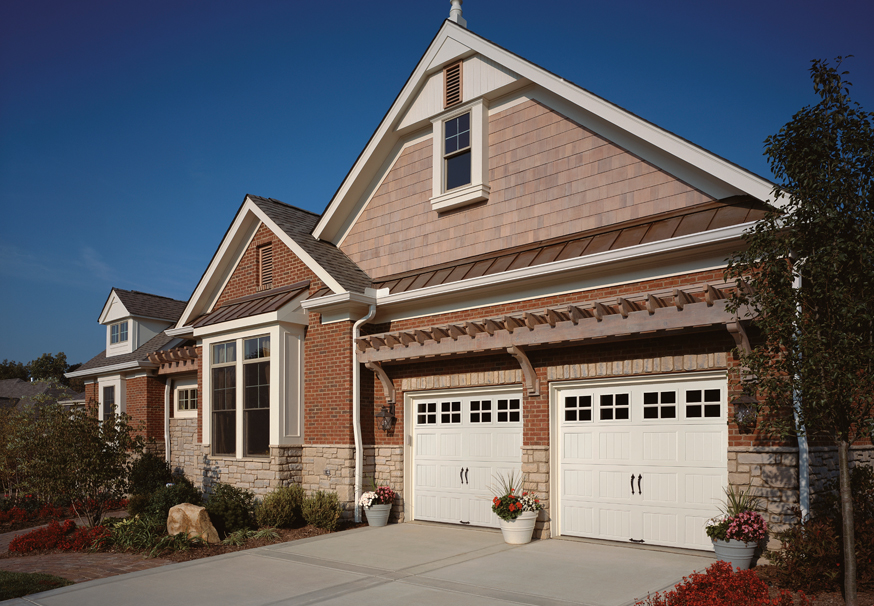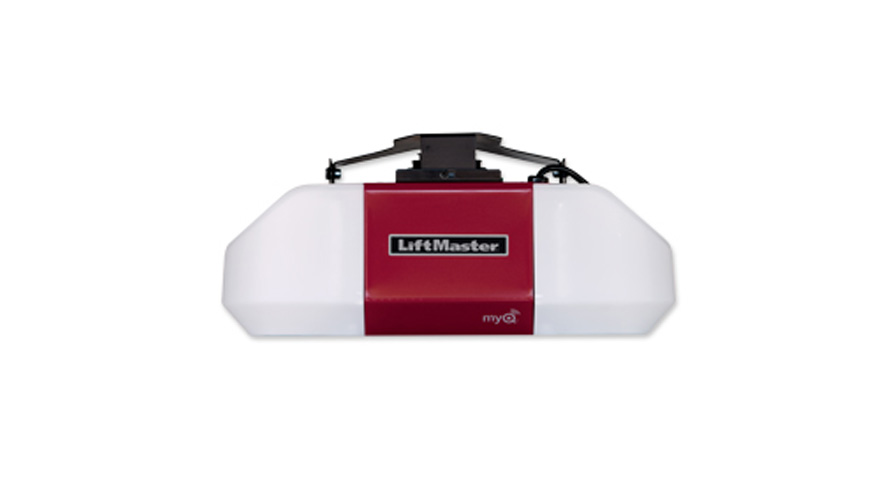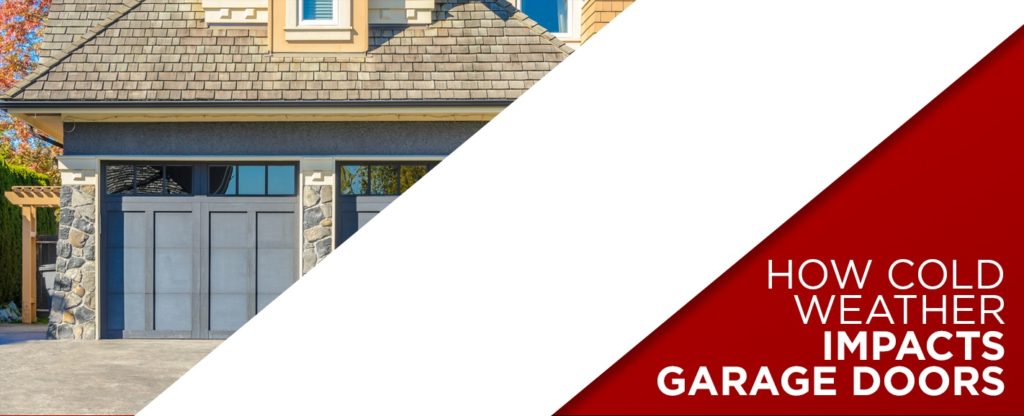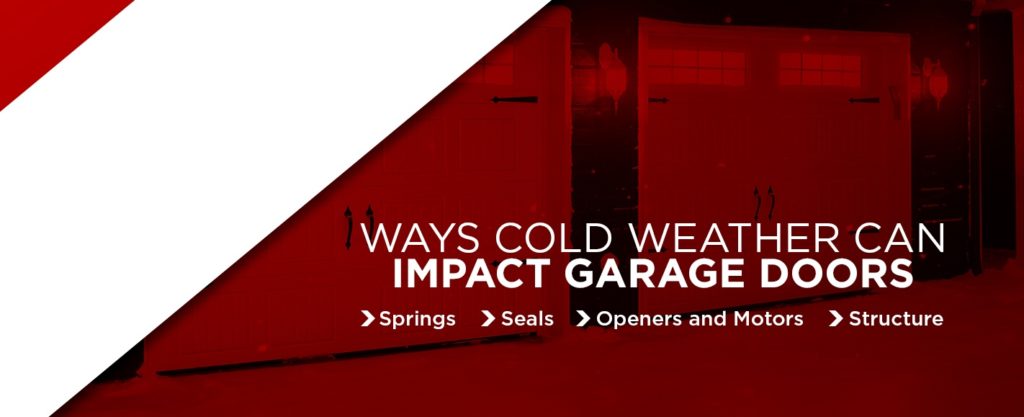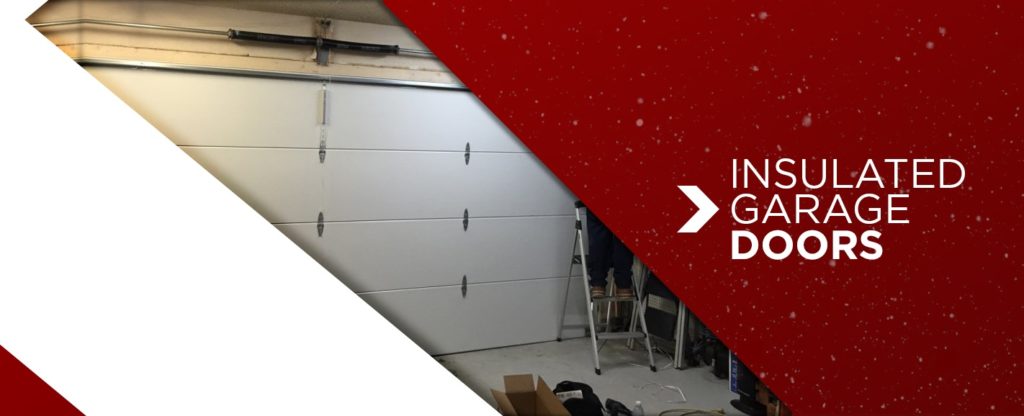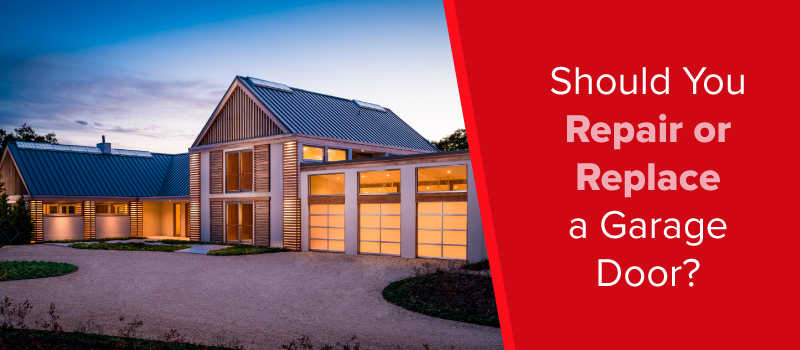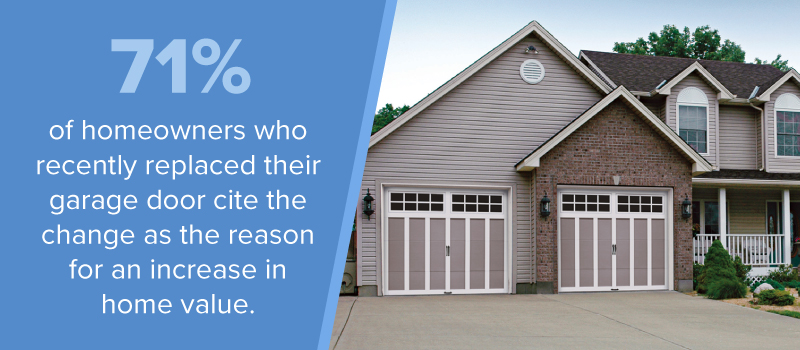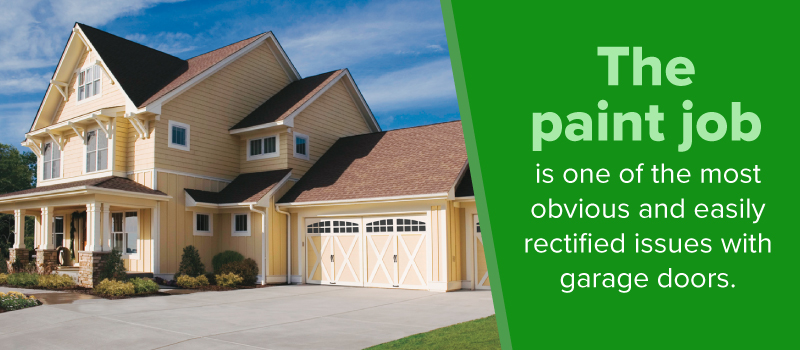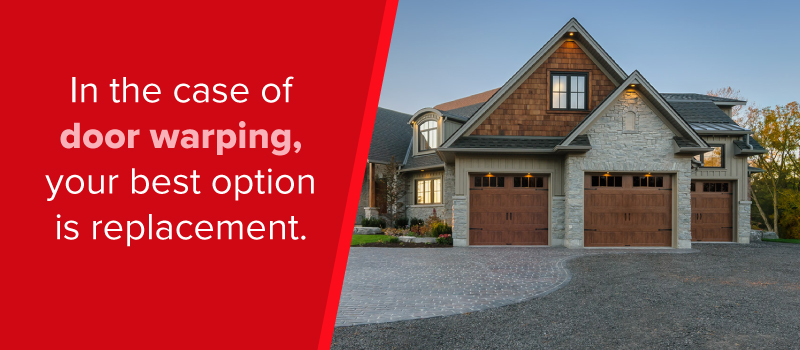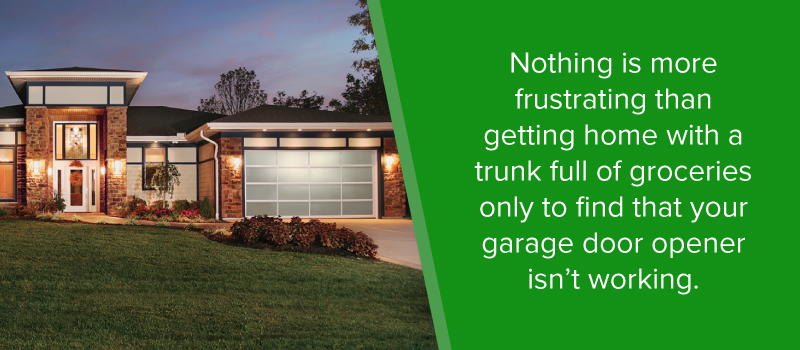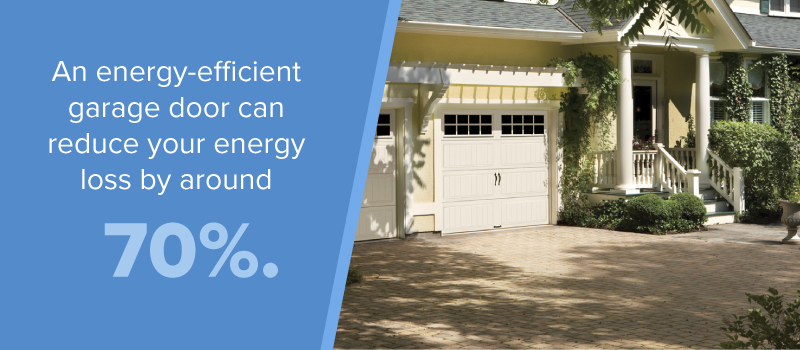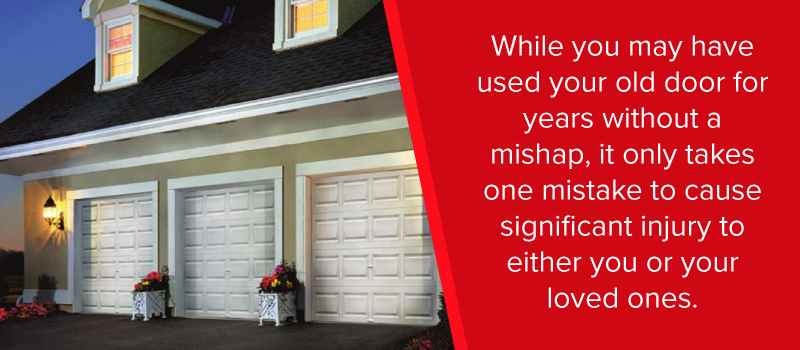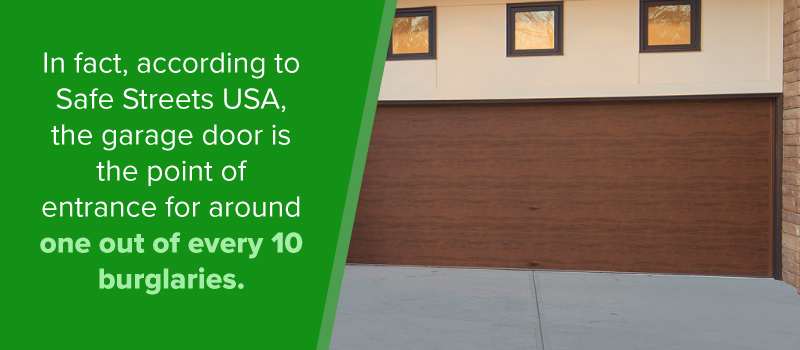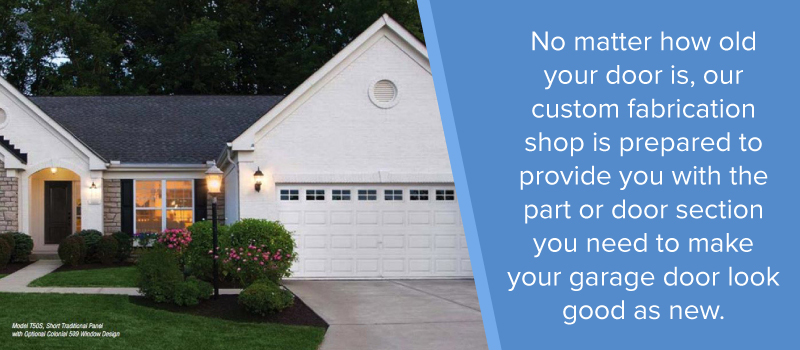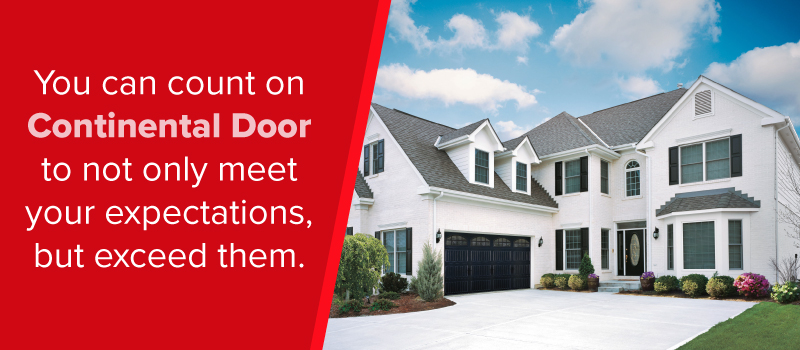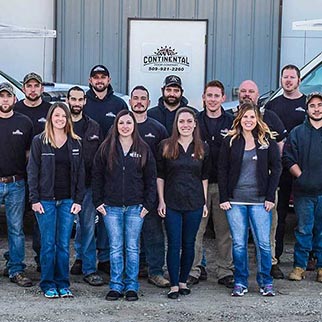How to Manually Open and Close a Garage Door
How to Manually Close and Open Your Garage Door
In the past, manually opening and closing a garage door was common practice. Drivers had to get out, unlock the garage door, lift it, drive in, park and close the door behind them. These days, most garage doors are automatically operated, so the driver can easily open and close the door by remote control.
We may not need it often, but knowing how to manually open and close a garage door is important when necessary. Here’s how to open your garage door manually when there’s a reason it won’t open automatically.
Can You Manually Open and Close a Garage Door?
What happens if the power goes out? How do you open a garage door without power? What if you lose the remote? What if your garage door opener is broken? Do you know how to open a garage door without the remote? There are several reasons you should know how to open an electric garage door manually. If you can’t open the garage door manually when needed, read on to learn more.
Safety Precautions Before Manual Operation
Safety should always be your priority when handling a heavy garage door. Numerous moving components can pose a risk, including:
- Faulty or broken springs
- A door knocked out of its tracks
- Loose or snapped cables
Inspecting these parts regularly for wear and tear can help you identify and prevent issues later.
Forcing the door closed when the springs are broken can cause it to slam down forcefully. This can damage the door or harm anyone standing close. This is why it’s important to know why the door isn’t working automatically before attempting to operate it manually.
A professional garage door technician will identify the problem beforehand to ensure no issues could lead to damage or harm.
Preparing Your Garage Door for Manual Operation
Before handling your garage door manually, check that the springs, tracks, rails and cables are in working condition. The door should balance evenly and lift without too much resistance. Be careful when handling the door, as it can be surprisingly heavy, especially wooden doors. Aluminum and steel doors are lighter to handle.
Double-check to see whether the source of the problem is a power outage, and inspect the garage door remote control for dead batteries.
How to Open a Garage Door Manually
Opening the garage door manually is not too difficult. When you find yourself in a situation where technology fails you, manual operation is your only option. A power outage is usually the cause of your opener failing, but the opener could also be faulty. How to open an electric garage door manually depends on whether you’re trying to get in or out.
Opening the Door From the Inside
When you’re stuck inside and need to be somewhere, the last thing you want to deal with is an unresponsive garage door. Follow these steps to open it manually from the inside:
- Disengage manual locks or deadbolts.
- Turn off the garage door opener power source if it’s not already off.
- Find and pull the red hanging emergency release cord from the center track, disengaging the door from the garage opener.
- Lift the door by pulling it upwards from the center over your head, where it will slide onto the track and remain firmly in place.
- Pull out your car and lower the door manually again.
- Engage manual locks or deadbolts to secure the door.
Opening the Door From the Outside
If you’ve come home and can’t access your garage, you can also open the door manually to get inside. Here’s what to do:
- Find the emergency built-in release with a key slot at the top of your garage door.
- Enter and turn the key, then pull the lock mechanism outward.
- The emergency release cord should be disengaged.
- Pull the cord, disconnecting the motor.
- Unlock the garage door at the bottom next to the door handle.
- Lift the door from the bottom up over your head into the tracks until it’s in place.
Not all doors have this built-in release mechanism. If yours doesn’t, you’ll need a wire coat hanger and a ladder. Follow these alternative steps:
- Straighten the hanger wire and make a hook at one end.
- Slide the hooked end between the garage door and frame at the top center.
- Locate the emergency release lever and pull it with the hooked wire end.
- You’ll hear a click when the door is disengaged.
- Remove the wire and lift the door from the bottom upwards into the tracks until it slides into position.
- Enter the garage and manually pull it down to close it once parked.
For safety, pull the emergency release handle when the garage door is down. Be careful where you place your hands, as there are pinch points where sections come together. Remember to call a reputable garage door company to assess your automatic door opener.
Troubleshooting Tips for Opening Issues
Some common garage door opening issues and solutions include:
- An aged opener: If it is old and worn, it may be time to replace it.
- Broken springs or cables: If the springs or cables are broken, they can’t lift the door and must be replaced.
- Remote control issues: Check the battery to see if it’s still working, and replace it with a new battery if necessary.
- Blocked photo eye sensors: Dust and dirt can block their transmission. Clean the lenses on both to resolve the issue.
- Rusted rollers and tracks: Old, rusty ones can affect the door’s motion and should be lubricated regularly or replaced.
- Strange noises when opening: This may indicate an underlying issue like loose cables, roller, nuts and bolts, broken springs, or misalignment. It’s best to have a professional technician check your door.
How to Close a Garage Door Manually
Closing a garage door manually is simple. Here are the steps to follow.
- While the door is open and securely in place, pull the red emergency cord down and back towards the opener.
- You’ll hear a click when the door is disengaged from the opener.
- Hold the door in the center and guide it until it closes.
- Secure it by locking the door at the bottom.
Returning Your Garage Door to Automatic Mode
Now that you know how to open and close an automatic garage door manually, you should know how to return it to automatic mode once the power is back. There are two ways to do this:
- Pull down on the release rope again, but this time, pull it toward the garage door to guide the trolley attachment back onto the track.
- If this doesn’t work, there should be a button you can press on the remote opener to automatically pull the attachment back into its proper location.
Check out Our Video to Learn How to Manually Open Your Garage Door
We’ve provided a lot of information in this article. If you’d prefer to watch and learn instead, check out this video.
Call Continental Door for All Your Garage Door Needs
The problem might not be the power but your garage door opener, so it may be time to repair or replace it. If you have issues with your garage door opener or garage door in the Spokane area, contact Continental Door Co., the garage door and opener repair and replacement experts for quick, friendly and efficient garage door service.
We are eager to help resolve any garage door opener concerns you have. Call us or request a free estimate, and we will get in touch.
Four Ways to Unstick Your Garage Door
You’re trying to leave your home and get to work in the morning — only to find your garage door is just not budging. Stubborn garage doors are a common problem that occurs for any number of reasons, from broken machinery to something as simple as the weather. Of course, in order to fix the problem, you first have to determine its cause.
In this article, we’ll help you troubleshoot why your garage door sticks and offer practical solutions. You’ll be back on your way to work in no time.
Request Service NowTroubleshooting Your Stuck Garage Door
A garage door can start sticking for a variety of different reasons. Some may require professional assistance to repair. Others are simple fixes that can be avoided with regular maintenance and preventive measures. Common reasons include:
- Weather: Melted snow left around your garage can turn to ice and freeze your door. If ice is the culprit, you should be able to diagnose the problem visually. Bad weather and ice can also damage door springs, causing them to become brittle and stop working.
- Obstructions: Your garage door operates using torsion springs, which exert force with rollers along a track. If these rollers become obstructed, they’ll stop functioning properly, leaving your door stuck.
- Broken remotes: Electronic garage openers will sometimes break down. If you’re unsure why your door isn’t opening, try pulling your garage’s emergency release cord and lifting it by hand. If it opens all the way, your remote is likely the issue and may need replacing.
- Jammed pulleys: A pulley and spring system pulls your garage door up and down on the track. These pulleys and springs can become jammed or wear down over time.
- Unprofessional door installation: Garage doors should be installed by an expert who knows what they’re doing. If you’ve attempted a DIY installation project or moved into a home with a previously-installed door, there may be faulty mechanisms causing it to stick.
Fixing Your Stuck Garage Door
Once you’ve deduced the likely cause of your garage door sticking to the floor, what should you do? In most cases, it’s best to call in the professionals. They will be able to resolve the issue properly without causing any potential damage in the process.
Melt or Scrape a Frozen Door
Non-mechanical issues — such as weather and obstructions — are often simple fixes that you may be able to perform yourself. If you notice that your door is frozen, pour some hot water over the icy area and promptly try to open it again. Alternatively, using an ice scraper can help get rid of the ice buildup and unstick your door.
Check and Remove Obstructions
If your garage door opens halfway and stops, its tracks might be jammed or obstructed. To fix obstructions, check all tracks for any objects or debris in the way and carefully remove them if possible.
Request Professional Service
If your garage door is sticking as a result of jammed or broken pulleys or springs, it’s time to bring in the experts. Continental Door is a go-to door maintenance and repair service in the greater Spokane area, providing 24/7 emergency service to help homeowners or commercial businesses un-stick their garage doors. Repairs may require replacing broken parts, fixing springs or repairing jammed tracks.
Check Your Technology
If you’ve deduced that your door remote is the issue, try replacing the batteries or purchasing a new opener. Alternatively, the garage door photo-eye may be malfunctioning due to being knocked out of alignment or mistaking bright sun glares for an obstruction. Assess your photo-eye to see if this could be preventing your door from opening or closing. If it’s misaligned, you may need to request service from a professional to fix it.
Why Choose Continental Door?
Whether your garage door sticks when closing or won’t open up at all, there are few things more frustrating when you’ve got somewhere else to be. This common issue has plenty of causes, many of which can be deduced with an investigative eye. To handle a difficult or stuck door, it’s always best to call in the experts.
If your garage door isn’t moving, Continental Door is here to help. We’re available around the clock to unstick your door if you need urgent assistance, and we can also offer repair and maintenance services to reduce the chances of it happening again. Interested in learning more? Request our service or a free quote today. You can reach us for emergency service at 509-921-2260.
Request ServiceWhen Should I Call for Garage Repair?
Should You Call for Garage Repair?
Your garage door is a complicated piece of equipment that likely goes through multiple uses each day. You expect it to open reliably when you leave for work in the morning, and open smoothly upon your return. With proper maintenance, garage doors can last a long time, but sometimes things happen that result in the need for professional repair. However, it’s not always easy to know when you need to call a garage door repair company, or when you should be replacing your garage door instead of trying to get it fixed. This guide will help you decide when it’s time to call for garage repair or replacement.
Why You May Need to Call for Garage Repair
A variety of situations call for the help of a professional. The following are four common instances where you shouldn’t attempt to make repairs yourself.
Damaged or Broken Lift Cable
This issue is most common in older garage doors that have been out of use for a while. You will find the lift cables on either side of the garage door, where each one wraps around a drum. When the door alignment shifts for any reason, the cable can’t align correctly within the drum. This issue can lead to the cable breaking without much of a warning.
A broken lift cable will result in the weight of the garage door transferring completely to a single side. When this happens, one side of the door will appear to close normally and get to the ground, while the other side stays ajar. This problem is typically the result of failing to schedule regular inspections and maintenance.
Visible Damage and Impact to Garage Door
Impact, whether from something as small as a soccer ball or as significant as a car, can cause real damage to your garage door, especially if it’s an older one or made from low-quality materials. An impact hard enough to make a visible dent in the door is also strong enough to damage components inside it.
Weather Exposure
Exposure to the elements and inclement weather can cause premature degradation of door panels that’s not only unsightly, but can affect how the door functions. High winds and exposure to sunlight or mildew damage panels and cause the door to look worn down. The longer you let weather-related damage persist, the weaker the garage door becomes over time.
Garage Door Is off Track
Track misalignment is one of the more common reasons to call for garage door repair. The most common thing that causes a door to go off track is bolts on the horizontal tracks coming loose, which causes the bracket to move around in response to the vibrations that happen during typical use. When tracks become misaligned, there is a significantly increased risk that the rollers will come off.
If a door’s horizontal tracks consist of low-quality material, even moderate impacts can bend them, and the door can fall. Calling in a repair service will get your door back on track safely, restoring smooth function. You can also have them determine whether it’s appropriate to replace old tracks with stronger or better-designed ones. For example, you may want higher-gauge steel or tracks reinforced with angle iron.
Other Potential Garage Door Repair Scenarios
Here are some additional scenarios in which you may or may not need to call for repair, depending on how much you know about how to fix garage doors.
- Broken springs: The springs in your garage door are always under pressure, and you’ll know if one breaks by the loud bang you will hear. Damaged springs may be the culprit when the garage door opens a little, then stops. Only professionals should handle this repair, due to the inherent safety risks involved.
- Broken hardware: Hinges are the most typical piece of hardware to break or get damaged in a garage door. If you only need to replace one, you may be able to do it yourself, but if there are multiple hinges or other pieces of hardware that need repair, it’s best to call a garage repair company.
- Broken or cracked door panels: When an impact is strong enough to crack or otherwise break panels, you won’t be able to repair them yourself. Due to the weight of these panels, it takes two or more people who know how to fix garage door panels safely.
- Broken wheels: Wheels will sometimes lock up and stop turning altogether, necessitating full replacement. It is easy to bend the door’s track or accidentally damage other components while attempting a DIY repair of the wheels, and it’s one of the more dangerous parts to replace.
- Missing or damaged weatherstripping: Putting in new weatherstripping is usually OK to do by yourself if you are only installing it on the bottom or sides of the door. For maximum effect, however, you should also have an expert install weatherstripping between the door panels.
- Broken door opener: There are a lot of complex moving parts within your garage door opener, so unless you’re doing something simple like replacing the battery, it’s best to call the professionals.
Should I Repair or Replace My Garage Door?
A variety of repairs are straightforward for a technician to fix quickly. However, sometimes it’s more practical to go for a full replacement of the door. Here are three situations where you should consider whether garage door repair or replacement is the better option.
1. Long-Term Malfunctioning
Typically, if your garage door suddenly breaks, it will be due to an isolated issue you can have fixed once and left alone. However, you may end up needing to replace your door if it hasn’t been functioning correctly for a lengthy period. This problem can happen when there is a slight issue, like a small misalignment, that goes unaddressed for weeks or months. Even a little misalignment can cause significant premature wear and problems for the lift mechanism after weeks of opening and closing.
2. Severe Damage to the Garage Door
Having one panel replaced is not a big deal and is a fairly common repair. When you have damage to more than a single panel, however, you will quickly find it may be more cost-effective to get a whole new door. Doing so also allows you to choose a more durable material that will resist a higher caliber of impact or weather damage in the future.
3. The Garage Door Is Getting Old
The older your garage door is, the more you should consider having it replaced rather than repaired. Older doors will only become more prone to breakage over time, so repairing yours may end up being a waste of money if it is going to fail again soon anyway. A repair technician can evaluate your door for age-related wear and tell you whether it’s worth it to fix, or if you are better off getting a new one.
4. The Garage Door Is Slow
While all garage doors open at a measured pace, an exceptionally slow door can be a sign that you need a replacement. If you notice the garage door won’t open immediately upon pushing the button on the remote, or the speed of opening and closing has diminished significantly over time, you may need to replace it.
5. The Garage Door Is Noisy
Some noises clearly indicate it’s time to fix or replace a specific part, but others are vaguer and may indicate that the whole door and system need replacement. If you hear any banging, squeaking, grating, crunching or grinding, it’s time to call and have a technician evaluate the situation.
When to Call a Garage Door Repair Professional
Unless you have extensive knowledge of how to fix garage door issues, it’s a good idea to call a professional anytime you notice something going wrong with your door. Garage doors weigh hundreds of pounds, and the springs they contain can also cause severe injury to hands or other limbs that get in the way.
It’s also possible that by tinkering with your garage door, you will make the issue worse and more challenging to fix. Although online tutorials can help you with straightforward repairs like a battery replacement, there is no substitute for formal training on these complex systems. However, there are some things you can do before calling a repair professional to give them better information and make repairs go more smoothly.
- Visually inspect your door: Check it for damage like dings, dents or cracks. Ensure no outside light comes through the bottom or sides, and note any spots where the door isn’t sealing correctly.
- Check the hardware: Look closely for any rusting or other damage to the lift arm, springs and hinges.
- Inspect the tracks: It’s usually easy to spot misalignment or bending in the door’s tracks. When you open or close the garage door, the wheels should roll smoothly along the track.
- Inspect the supports: It’s essential to ensure all anchor screws are firmly in place on the overhead tracks and door supports.
- Replace remote batteries: Be sure to put new batteries in your automatic remote at least once a year. A surprising number of people don’t think to try this first when the remote stops working.
- Lubricate hardware: Proper lubrication keeps hinges opening silently and wheels rolling smoothly. Be sure to ask your technician what products are appropriate for use on your door.
- Wash the door: Washing your garage door now and again helps remove dirt and debris that can clog up hinges and cause other issues. Don’t use a power washer, as it might take the paint off the door. Instead, use a mild product like car wash soap along with your garden hose’s spray attachment.
Doing these things regularly will help you become more familiar with your garage door, allowing you to spot problems more quickly and call swiftly for professional repair or installation of a new door.
3 Signs You Need a New Garage Door
Not everyone can confidently determine when it’s time to invest in a new garage door. It’s a crucial decision, so here are three signs that all point to getting a garage door replacement instead of repair.
1. Diminished Curb Appeal
Your garage door takes up a lot of real estate on your home, and most garages directly face the street. An old, outdated door can detract from your home’s appearance. Conversely, having a garage door replaced will spruce up your house and provide a 94.5% return on investment.
2. Frequent Worry
A garage door should work right every time you use it. If you find yourself worrying about whether your door will act up, or won’t open at all, you should consider replacing the unit with a new one that won’t be a source of stress.
3. Lack of Safety or Security
The older your garage door is, the less likely it is to have safety features you can find in today’s doors. In addition to features like motion sensing and auto-reverse, new doors can offer encryption for your opener, lock-out to disengage the remotes and more. A new garage door will improve the overall security of your home.
Home Insurance and Garage Doors
What’s the connection between home insurance and garage door replacement? Will home insurance cover the cost of repairs or a new garage door? Generally, it depends on the source of the damage.
- Damage from vehicles: Most home insurance policies will cover damage done when you or one of your family members drives into the door. If someone else drives into the door, their auto liability policy will cover the damage.
- Weather damage: Homeowners’ insurance usually covers damage caused by weather like high winds or hail, at least in part. Be advised, though, that the typical policy does not cover several types of natural disaster damage. Flood and earthquake damage, for example, usually require specific policy additions.
- Break-ins or vandalism: Check your policy for a clause that covers “malicious mischief.” This category of damage includes actions like breaking windows or painting graffiti on the home, including the garage door. If strangers maliciously damage your garage door, your insurance should cover you.
- Wear and tear: If damage to your garage door is the result of typical wear and tear, or even poor maintenance, insurance will not cover repairs.
Always read your policy or check in with your insurance agent to see if your home insurance can partly or fully pay for garage door repair or replacement.
Why Choose Continental Door for Your Garage Door Repair?
Having a garage door repaired can be stressful if you don’t choose the right repair company. Continental Door is proud to offer courteous and professional service that makes it easy to get your garage door functioning flawlessly. Whether you need maintenance, repairs or are looking for a new garage door in the Spokane, Wash., area, Continental Door is ready to provide you with the most effortless experience possible. If you’re interested in any of our garage door services, contact us today.
Request Garage Door Repair Now
What Parts of My Garage Door Need Replacing?
What Parts of My Garage Door Need Replacing?
We hope your garage door will last you a long, long time. But even if it lasts for many years, you’re probably going to have to replace some parts along the way. That’s just the way machines are designed. They have moving parts that wear out, and your garage door system is no different.
What Parts Can You Expect to Repair Over the Life of Your Door?
Here are four of the components you will likely need to replace at some point during your garage door’s lifespan:
Springs
This one is almost guaranteed. Your torsion springs or extension springs are the coiled bits of metal that actually do most of the work when you are opening or closing the door. Most standard springs are designed to last about 10,000 cycles, or openings and closings. For most people, this means about eight years before they are totally shot, but depending on how often you use your door and how much stress you put on it, it could be a bit sooner or later than this.
Hinges
If you enjoy the convenience of a modern door that rolls up into the roof of the garage rather than swinging straight up and then going back, you can thank your hinges. But rolling the door up and down on those hinges takes its toll, and you’ll probably have to swap them out sooner or later.
Garage Door Openers
If you buy a new, high-quality garage door opener, it will probably last you a long time. But garage door openers are pretty intricate machines, and there are a lot of things that can go wrong, especially if you have an older model. If your door is not opening or closing properly, particularly if you are able to open and close it without much difficulty manually, there’s a good chance it’s time to have your garage door opener looked at. You may also want to replace your garage door opener to take advantage of the security and convenience features that are standard with new opener models.
The Whole Door
If you’ve had your garage door for 10 years or more, it may be time to swap out the whole system. Frequent repairs, especially ones that are adding up to greater than the cost of a new door, are a definite sign that it’s time to start fresh. Your door may simply look or feel old, worn out or out of style. A new garage door can really improve the curb appeal of your home and is one of the best home improvements with respect to return on investment, so if it’s time, don’t be afraid to get a new one in there.
Whether you need a new door, replacement parts or a garage door opener upgrade, if you’re in the Spokane, WA or Northern Idaho region, just contact Continental Door Company, and we’ll take care of you.
Request Garage Door Repair or Service
How Cold Weather Impacts Garage Doors
A garage is a major convenience, especially during the winter. With this useful storage space, you don’t have to brave the cold weather, scrape snow off your car or risk slipping on icy sidewalks. However, the cold temperatures of winter can cause your garage door to malfunction in a variety of ways. In this article, we’ll discuss how cold weather affects garage doors and what to do if this crucial contraption suddenly stops working.
Table of Contents
- Ways Cold Weather Can Impact Garage Doors
- Benefits of Insulated Garage Doors
- What to Do If the Garage Door Stops Working Due to the Cold
- Importance of Preventative Maintenance for Garage Doors
Ways Cold Weather Can Impact Garage Doors
Garage doors consist of many components, most of which are affected by the cold in one way or another. Below we’ll cover the parts most likely to fail when the temperatures drop.
1. Springs
Broken springs are a common problem and usually due to wear and tear, as the springs in a garage door last approximately 10,000 cycles on average.
Many homeowners forget to perform checkups on their springs when the weather is cold, but it should be done frequently. You can do this by lifting the door by hand. Raise the door roughly halfway and then release it. It the garage door does not fall, this means your springs are in working order. If the door moves down, however, this may be a sign that you need to purchase new springs.
One way to avoid this unpleasant situation is by having a safety cable installed. This cable exerts sufficient force to serve as a counter to the weight of the door. If your springs do end up breaking even when you have a safety cable attached, you should still contact a professional immediately to replace the springs.
This situation can also be prevented by scheduling regular preventive maintenance.
2. Seals
If water collects on the ground around the door, the door can become frozen shut. This is one of the most annoying garage door malfunctions. If you notice that your garage door is frozen to the ground, there are a few ways to deal with this issue:
- Open it manually. Although it may not work in more in more severe winter conditions, it is worth it to try opening the door by hand. Make sure to use the emergency release cord.
- Scrape the ice. Using a scraper, try scraping and chipping away at the ice.
- Melt the ice. Use a heat gun to melt the ice — but do so with care. Metal doors should not be exposed to too much heat at once.
- Pour hot water. Dumping some hot water at the door’s base can provide a quick solution, although remember that if this water refreezes, it could create a slipping hazard.
While all of these methods are worth trying out, there is no guarantee any of them will be effective. It is best to prevent this issue altogether by sweeping away water and snow from the base of the door as soon as you notice them.
3. Openers and Motors
Cold weather affects garage door openers as well. Because the motor consists of many moving parts and has to work extra hard in cold weather, it is particularly important to ensure that all the parts are well lubricated with the right lubricant. If you use the wrong lubricant, the consistency can become thicker, requiring the motor to exert itself even more.
You should also examine the photo-eyes during cold weather. Snow or condensation can block the photo-eye lenses, which means that the garage door openers will cease to operate. If your door suddenly stops working, the first thing you should inspect and clean is the photo-eyes.
4. Structure
Garage doors contain many parts made of metal, and metal contracts when it’s cold. This includes the track, the springs and the hinges. If these parts do not regularly move during the colder months, they may warp or seize up. For this reason, it is highly recommended that you lubricate these components so that they can continue to work correctly.
Benefits of Insulated Garage Doors
Buying a garage door with insulation can help you avoid many garage-related problems commonly experienced during the winter months.
Here are some of the benefits of an insulated garage door:
1. Your Garage Will Be Warmer
While space heaters and insulated walls will help to warm your space, if the garage door is not insulated, this will cause the warm air to escape through the door, and you may end up spending a small fortune on your heating bills. A warmer garage doesn’t just make your trip to and from the car more comfortable, but it also makes it easier to use the space for other activities.
2. You’ll Save on Energy Costs
Garages are not considered to be a living space, so the standards for building them are not the same as for the rest of your home. Unlike in most other areas of a house, gaps and air leakage are allowed in the garage. Because of this, garages tend to be one of the least energy-efficient areas of a house. Researchers have found that upgrading your uninsulated garage door to an insulated model can lower your heat loss by over 70 percent, especially if your garage walls are insulated as well.
3. Your Tools Will Be Protected
Freezing temperatures in your garage can cause damage to your vehicles, appliances and many other things. In particular, tools that have water inside them, such as power washers, may freeze and crack, which will effectively ruin them. Cold temperatures can also cause the fuel in your lawn mower engine to gel up, destroying this pricey piece of equipment. By investing in an insulated garage door, you may be avoiding thousands of dollars in damage.
4. Other Items Will Be Protected
Protecting your garage from extreme temperatures can also increase the life of paints, fertilizers, motor oil, cleaning supplies. Exceptionally cold or warm temperatures can change the consistency of these items.
5. Insulated Garage Doors Protect Your Car
Cold temperatures can affect many components of your car. They can lower the air pressure in your tires as well as thicken your engine, transmission and brake fluids. Cold weather can also cause your battery to die since most batteries function optimally between 30 and 90 degrees Fahrenheit. If your garage door is insulated, you could avoid dealing with all of these car issues.
6. Insulated Garage Doors Are More Durable
Insulated garage doors are manufactured differently than single-layer doors, and are stronger as a result. Insulated garage doors commonly feature a steel or aluminum frame, which is filled using solid-core insulation. This insulation is then put in between steel panels. This construction style makes the door more durable and reduces the chances of it being damaged or dented. Because garage doors should be able to withstand various weather phenomena, cars, equipment and kids, this additional strength comes in handy.
7. Insulated Garage Doors Are Less Noisy
The insulation also helps to dampen any vibrations your garage door, which is especially desirable if there is a living space next to or above the garage, as the inhabitants will not be disturbed whenever the door opens or closes. If you have a noisy garage door, you may want to consider upgrading to an insulated model.
8. They Reduce Sound Transmission
Garage doors with insulation also reduce the transmission of sounds passing through it, which can be a great option if you live near a busy street or have noisy neighbors.
What to Do If the Garage Door Stops Working Due to the Cold
If it’s uncomfortably cold outside and your garage door has suddenly stopped working, your first step should always be to replace the batteries in your remote. The batteries should all be of the same brand and should always be changed as a set.
If you’ve replaced the batteries in the remote and your door isn’t moving, the number of possible causes is substantial. By lifting your door by hand, you will be better able to isolate the issue.
To begin, disconnect the garage door from the lifting mechanism, which can usually be done by pulling a cord. This cord dangles from the lift and often has a red handle. This feature allows your door to operate independently of the lift mechanism. Knowing how to do this may also come in handy if your power goes out and you need to use your garage door.
Next, lift the door manually and pay attention to how it feels to lift it. Depending on how your door feels, you will take one of the following three courses of action:
1. Your Door Feels Heavy
If it feels heavy, this likely means that the springs, which are there to help you, are either broken or worn out. Garage doors have springs installed to provide a counterweight, which makes it easier for you and your motor to lift the door. With time, though, these springs may break or wear out.
However, under absolutely no circumstances should you try to repair or replace broken garage door springs on your own. Because the springs are under tremendous pressure, they could snap and cause injury or even death. If you believe that your garage door springs have broken, immediately contact an experienced technician.
2. Your Door Is Sticking in Spots
If your door does not feel heavy but rather appears to get stuck at certain places while you lift it, this issue is more likely related to lubrication.
Keep in mind that garage doors tend to be made of metal and travel along a track made of metal. For this reason, lubrication is critical, especially when the weather is cold. Remember that lower temperatures can affect the consistency of your lubricant, causing it to harden or become gunky. Check the rating on your lubricant to make sure it can withstand the lowest possible temperature that is likely to occur in your region.
Having too much lubrication on your tracks can also present a problem, as can lubrication that is unevenly distributed as a result of the cold. Make sure to visually inspect your tracks and keep an eye out for these issues.
Fortunately, adding more lubrication is a fairly straightforward task that any homeowner can handle, provided that they are wearing appropriate gloves. When reapplying the lubrication, make sure that the sharp metal on the tracks does not cut you.
3. You Have No Problems Opening the Door Manually
If your door opens smoothly with little effort, this means that the problem must be with the motor. In most cases, this is not an issue that you can solve yourself. It is best to hire an experienced professional to come and fix your motor.
Importance of Preventative Maintenance for Garage Doors
Even if you can fix your garage door with relative ease, a garage door malfunction in the dead of winter is no fun. It’s best to prevent it from happening in the first place. Garage doors should be inspected annually, and there’s no better time to do it than right before winter starts. Hire a professional to come and search for any issues that might lead to a malfunction.
If you’ve noticed a minor problem with your door, you should get it fixed right away — not when the temperature is below zero, there’s a snowstorm outside, and your garage door won’t open.
Contact Continental Door for All Your Garage Door Needs
If you live in the Greater Spokane, Wash., area and are in need of garage door repair, service or maintenance, you can count on Continental Door to get the job done correctly, efficiently and safely.
If you’re interested in buying a garage door, we offer a diverse collection of high-quality doors from the most trusted manufacturer in the industry. We are Spokane’s only Master Authorized dealer for Clopay® and are their largest dealer in the Western United States.
We also offer a large selection of other products, including:
Come in person to our showroom to explore options right for you. If you are looking for help with ideas, we even offer design consultations free of charge.
In addition to our wide selection of high-quality products, we also pride ourselves on our commitment to superior customer service and fast response times. Once you decide on the perfect product, you can enjoy our premium service and knowledge that we’ve come to be known for. We’ve grown rapidly in the 10 years that we’ve been serving the Spokane community, and we attribute this growth to our expertise and high standards of service.
If you’re in need of a service, you can schedule one using our online contact form. If it’s an emergency, you can call us at 509.921.2260 any time of day or night and a well-trained team of technicians will be at your door right away.
Related Posts
Should You Repair or Replace Your Garage Door?
Indoor & Outdoor Uses for a Garage Door
Updated: 05/22/2019
What’s the Difference Between Torsion Springs and Extension Springs?
What’s the Difference Between Torsion Springs and Extension Springs?
You likely know that your springs are among the most important elements of your garage door system. If your garage door is not opening or closing correctly, it’s very often that a broken or worn out spring is the culprit.
If you’ve heard people talk about garage door springs before, you’ve most likely heard them called either torsion springs or extension springs. These are two different types of garage door springs — but what’s the difference, and which one is better?
Torsion Springs vs. Extension Springs
Torsion springs are large springs you will find in a shaft above your garage door. Extension springs are smaller springs attached to the sides of your garage door. Most doors will have one of these types of garage door springs— you would never have both types of spring on the same door, however, smaller garage doors (8×7 or 9×7) only have one spring.
When you open or close the door, if you have torsion springs, they wind or unwind to lift or lower your garage door. Extension springs fully expand or contract when opening or closing the door.
Learn More About Garage Door Spring Replacement
Which Are Better, Torsion Springs or Extension Springs?
In general, we prefer torsion springs to extension springs, for a number of reasons. One, even though torsion springs tend to be more expensive, they usually last twice as long, so you get a better value. Torsion springs tend to open and close your door in a more controlled motion as well. Extension springs usually operate with a jerky motion, and this puts more wear and tear on the springs with each use.
Extension springs also tend to require a bit more maintenance than torsion springs, as they have a more complicated apparatus, and it’s not as easy to get to all the areas you might need to lubricate. Additionally, if a torsion spring snaps, it can make a scary noise, but it usually stays on the shaft. If an extension spring snaps, it could fly off. This is why it’s important to have regular professional garage door maintenance to make sure your springs are in good shape.
Should I Choose Torsion Springs or Extension Springs?
So why would you use extension springs? They do have their advantages. In addition to being less expensive, extension springs are useful if you do not have a lot of overhead space in your garage for a torsion spring system. Extension springs will certainly do the job, and they are generally safe when you maintain them properly. If you’re not sure which type of springs you have or which kind you should get, ask your garage door professional.
For more information about torsion springs, extension springs, scheduling garage door maintenance or other garage door-related issues in the Spokane, Washington or Northern Idaho areas, please visit us today at Continental Door Company.
Request Garage Door Spring Replacement or Service
How to Balance Your Garage Door
How to Balance Your Garage Door
If your garage door isn’t sitting right, you may need to balance it. An unbalanced garage door can put a strain on the door’s system as well as create a potential safety issue, so it’s important to take care of your balance issue as quickly as possible. If you’re not sure whether or not you need to balance your garage door — or how to do it if you need to — read on!
Do I Need to Balance My Garage Door?
To see if you need to balance your garage door, simply lift the garage door a little more than halfway and release it. It should come to rest between three and four feet above the ground. If it stops lower or higher than this range, you need to balance the door.
How to Balance the Extension Spring on Your Garage Door
Use a step ladder to hold the door open and take pressure off the door spring. You will then move the spring depending on where the door needs balance. MAKE SURE THE SPRING IS FREE OF TENSION BEFORE REMOVING. If the door is going down too far and too quickly, move the spring one higher hole on the bracket. If it is going up too far and too fast, move the spring down one on the bracket. Adjust springs on both sides of the door so they are parallel to each other.
Once this is done, test the door again to see if it you have balanced it. If not, go through the procedure again until you achieve balance. Once you are satisfied, close the door and use a level to make sure the door is hitting the ground evenly on both sides. If it is not, adjust the spring tension.
Caution: many doors are now made with torsion springs, which can be very dangerous if not handled correctly. Please contact us immediately if you are experiencing problems with a torsion spring and our experienced team will be happy to assist you! To see if your door uses an extension or torsion spring, please visit the Clopay Garage Door Springing Systems guide.
Consult Continental Door for More Assistance
If you’re in or around Spokane, WA, Northern Idaho or the surrounding areas, Continental Door can help you with any of your garage door issues. If your attempt to balance the garage door is unsuccessful, get in touch with us and we’ll come down and take care of it without a problem.
In fact, if you have a garage door balance problem, we recommend calling us right away. Any garage door maintenance, even simple procedures, can put you at risk of injury and void your garage door warranty.
At Continental Door, our trained experts can fix your problem fast and right, and inspect your door for other potential issues that we can take care of right away before they become an expensive problem. We’re ready and waiting to help you resolve your garage door maintenance and repair issues.
If you have any problem with your garage door at all, contact Continental Door today.
Request Garage Door Repair Now
How to Fix a Noisy Garage Door
How to Fix a Noisy Garage Door
Is there anything more irritating than a noisy garage door? The loud whirring, rumbling and rattling of a garage door every time it goes up or down — it makes you feel like something is very wrong even if it isn’t and alerts everyone in the house, also possibly all the neighbors, that you’re coming or going.
While it’s probably not realistic to expect that your garage door will glide noiselessly up and down every time you use it, or even that you’ll have it purring like a kitten, it shouldn’t be unbearably noisy.
What the Problem Could Be
If your garage door sounds like there’s a herd of buffalo headed straight for your living room every time you use or you open it, you need to do something about it. Here are some possible solutions:
1. Tighten Screws and Bolts
If you look at your garage door, you’ll notice there’s a lot of hardware going on there. Any loose screws or bolts could be interfering with the operation of your garage door and leading to excessive noise. Check all the screws, nuts and bolts, and if any are loose, tighten them with a basic wrench and socket set and see if that doesn’t solve your problem.
2. Check Your Rollers
Open and close your garage doors and watch the rollers to see if any seem loose or broken. You can also move the rollers back and forth a little bit manually to see if they seem to be functioning properly. Be sure to disconnect the garage door opener before you do this.
If you have a roller problem, you need to call in a professional. Untrained replacement of garage door rollers can be dangerous, and there’s a good chance the replacement rollers you use will be of poor quality. If you do call a professional to replace your rollers, you may want to request quieter nylon rollers over your existing metal rollers.
3. Check the Garage Door Opener
Many times, the source of most of your garage door noise is the garage door opener. A garage door opener with an old, failing motor that needs replacement can make a very loud raucous. If you determine that this is the problem, you will probably want to have your garage door opener replaced as soon as possible.
Annual Maintenance
Another way to avoid a noisy garage door is to make sure to have annual maintenance performed. Complete annual maintenance on a garage door entails lubricating all moving door parts with light household oil. These parts include:
- Full length of torsion springs
- Lift cables
- Lock hardware
- Bearing of sheaves
- Steel rollers — but not nylon rollers
It’s also recommended that you check for and tighten, replace or straighten loose or bent hinges. Checking the roller for worn out bearings, bent shafts or broken wheels is also important. Other key components to look out for are:
- Properly run extension cables in the sheaves
- Missing or loose bolts and screws from the door and track supports
- Bent tracks
- Worn cables at the bottom of the bracket button
Annual Maintenance Cautions
If replacing a hinge or roller, make sure door is down and locked, and only remove one hinge at any given time. It’s important you don’t attempt to repair a bent track by yourself. Any extension spring hardware, such as cables, springs, sheaves and sheave forks, containment cables or bottom brackets must be repaired with the door open, and should only be worked on by a trained professional. A spring assembly and wood anchor pad for torsion springs should also only be repaired or adjusted by a trained professional.
Contact Us Today
Continental Door Company sells and installs Linear and LiftMaster® garage door openers, considered by many to be the most reliable, efficient and effective garage door openers on the market today. If you’re ready to get rid of the noise and upgrade to a brand new Linear or LiftMaster® garage door opener — or if you need roller replacement or any other type of garage door repair in the Spokane or Northern Idaho Panhandle areas — contact Continental Door for a free service estimate today.
Should You Repair or Replace a Garage Door?
Homeowners like you are understandably concerned about the value of their home. You have invested significant amounts of money, time and labor into transforming a house into your perfect sanctuary.
At the same time, you also want a home you don’t have to be constantly worrying about. You want to save money on utilities while also ensuring your home is safe and secure.
You’d be surprised at how important a garage door is when considering these issues. A garage door is an essential part of your home’s curb appeal, and its insulation is one of the most important barriers against heat and cold. It’s also one of the most important lines of defense against intruders — whether they are human or vermin.
Consider these statistics from garagewownow.com: 71% of homeowners who recently replaced their garage door cite the change as the reason for an increase in home value. This isn’t very surprising, considering that a garage door typically makes up 30% of the street-facing surface of your home.
But what should you do if your garage door doesn’t seem to be cutting it anymore?
If your garage door is old, functioning poorly or not energy efficient, you will need to decide if it makes more sense to repair or replace your door.
While repairs may save you money in the short term, you need to also consider the value a new door can add in the long run.
As you decide whether to repair vs. replace your garage door, take a look at some of our tips on the best way to make sure your decision is the right one for you and your family.
Cosmetics
The first issue we’ll address is cosmetics. Considering its oversized presence as part of your home’s appearance, the way your garage door looks is important. So what kind of cosmetic issues are there, and what is the best approach for improving the look of your garage door?
Garage door paint: The paint job is one of the most obvious and easily rectified issues with garage doors. If your garage door is chipping or drab looking, a new coat of paint may be all you need.
Additionally, if your garage door is functionally fine but you are looking to transform the appearance of your home, a new, bold color on your garage door can change your curb appeal drastically. However, you also want to be careful of using paint when you may have more serious issues.
One of the biggest concerns with old doors is rust damage. While paint may stop further rusting from occurring, rust damage can weaken your door, making it both less secure and more dangerous. So if you see significant rust damage, you should strongly consider replacing the whole garage door rather than trying to repaint it.
Damaged panels: If a single panel or section is damaged — perhaps from an errant baseball or inclement weather damage — deciding whether you want to repair it or replace it will depend on the age of your door.
If your door has only been recently installed, repairing a panel makes a lot of sense. First of all, replacement parts are readily available and can be ordered quickly and affordably. Secondly, the rest of the door is likely still in excellent shape, meaning the cost of replacement wouldn’t necessarily be worth it, since much of what you’d be replacing is still in like-new condition.
However, if your door is older, a damaged panel may be the signal you need to finally replace your door. If the door is no longer being manufactured, a replacement piece will likely be much more expensive since it may be hard to find or require custom fabrication. Additionally, your door may have a number of other issues that, combined with the damage, would make replacement your best option.
If you aren’t sure about which category your door falls into, a professional will be able to fully assess the damage and give you a better sense of what option is best for you.
Warped Door: As wooden doors age, they are prone to warping. This can become a significant problem as automatic doors need to be straight in order to move up and down smoothly.
In the case of door warping, your best option is garage door replacement. New doors are designed to be more durable and thus are not prone to this kind of damage. Furthermore, new doors are far more energy-efficient and secure than the kinds of old wooden doors that are likely warp, so you will definitely be saving money in the long run with replacement.
Door Design: Finally, you may grow tired of the design of your garage door. When automatic garage doors were first installed in houses decades ago, the designs were often more plain and purely functional — there has been a drastic improvement in garage door designs over the past decade.
Today, new doors come in a wide variety of designs, all of which are made to match and accentuate the exterior of your home.
Considering that curb appeal is one of the biggest factors in improving home values, a well-designed garage door can go a long way in making your home stand out on the housing market.
Functionality
The next thing to consider when thinking about whether you want to replace a garage door is functionality. In other words, how’s your door working?
While certain issues can be easily repaired, there are others that are symptomatic of much bigger issues. In some cases, a full replacement is in order:
A sluggish door: Have you noticed that your door is starting to move up and down more slowly than it used to? There are a couple of things that could be causing the issue.
First of all, your motor may be in need of repair. This is something that a certified technician can fix and is best left to a professional. However, it is also something that usually does not always require a full door replacement.
Second, you may have your motor set to its slowest setting. This is especially common if it’s a newer door. For safety reasons, the default setting on an automatic door opener is always the lowest. However, adjusting the speed is easy. Instructions for doing so should be included in your owner’s manual.
Third, your drive chains may need to be cleaned and re-lubricated. If you have experience with this kind of work, you can easily do it on your own. Simply clean away any dirt and grime that has built up on the chain and then reapply a professional grade lubricant. However, if you are nervous about doing this kind of work, a professional technician can also do this job — and will be able to perform other tune-ups in the process.
The garage door opener doesn’t work: Nothing is more frustrating than getting home with a trunk full of groceries only to find that your garage door opener isn’t working.
There is some basic troubleshooting that you can try. First and foremost, make sure the car opener has fresh batteries. If that isn’t the issue, check to make sure the motor switch hasn’t been tripped. The motor in the garage usually has a dangling handle. If you pull this handle, the motor disengages, allowing you to lift the door by hand. This is helpful if you have a power outage, but sometimes it can get accidentally tripped.
If neither of these issues seems to be a problem, then you may need a professional to replace the motor. There could also be a significant jam in the mechanism, which again is an issue left to a professional because of the risk of injury. The problem may in fact be serious enough that it would make more sense to simply replace the door. A professional will help you determine what makes the most sense for you.
The garage door won’t go down: While a garage door stuck in the up position may be caused by all of the previously discussed problems, there is one more issue that might specifically cause your garage door to remain open.
One of the most common safety features that are installed in garage doors is a photo eye. These are designed to immediately stop a door from lowering in the event that something, such as a child or a car, crosses in front of them. However, if they have been knocked out of alignment, they will respond as if something is always obstructing them, thus locking the door in the upright position.
While you may be able to readjust them by hand, if you are having trouble, a professional will be able to put them back in alignment.
Garage door opens and closes randomly: While it seems humorous, having a door unexpectedly open in the middle of the night can be scary. However, there are a couple likely causes for a randomly opening door, and some of them are easy to fix.
First, make sure your neighbor doesn’t have the same brand door. It is possible that both of your openers are operating on the same frequency, meaning when they open their door, they’re inadvertently opening yours as well.
Next, make sure you don’t have a spare transmitter stored in a drawer somewhere. If there are other things piled on top of it, their weight may be accidentally setting the transmitter off.
If neither of these issues are the cause, you may need to call a professional to repair.
Learn More About Garage Door Openers
Energy Efficiency
We put a lot of time and energy into insulating our homes. Yet we often forget to think about insulation in our garage.
If you have an old door, especially a metal door, you might as well keep your garage door open all winter. They are usually poorly insulated, thus letting all of the warm air out, and increasing the cost on energy bills.
This is one of the biggest motivators for replacing your garage door. In fact, by focusing on energy efficiency, you could actually save yourself money in the long run.
Consider these statistics from Clopay® Garage Doors. An energy-efficient garage door can reduce your energy loss by around 70%. In the end, this results in an unheated garage staying 10 to 20 degrees warmer in the winter.
These doors work better because they have been designed with the latest in energy-efficient technology in mind. Using either expanded polystyrene or polyurethane insulation, these doors receive remarkably high ratings in regards to “R-values,” the unit used to measure energy efficiency.
This is especially important if you happen to have a bedroom or other room above your garage. A cold garage will disproportionately affect the rooms that are adjacent to it. Furthermore, the builders of many older homes were more aggressive in installing insulation within the shared wall between a garage and the rest of the house, but not the ceiling – especially above a garage.
By installing an energy-efficient door, you will immediately discover that your room above the garage is far more comfortable in both the hottest and coldest months.
Personal Safety
New doors have an additional advantage over older doors: They have better safety features.
Automatic stop switches and sensors are invaluable for protecting your family, especially small children, from inadvertently being injured by a closing door. Plus, newer doors are generally lighter, meaning they have less chance of causing significant damage.
While you may have used your old door for years without a mishap, it only takes one mistake to cause significant injury to either you or your loved ones. Is it really worth the risk? If you have an aging door, you should definitely consider contacting a professional in order to explore the safety benefits of a new door installation.
Increased Security
Finally, one of the biggest reasons to get your garage door replaced is security. An aging door can give burglars easy access to your home. A poor motor can also make a garage door easier to lift. Garage doors are often left off of home security systems, giving thieves a convenient entrance point.
In fact, according to Safe Streets USA, the garage door is the point of entrance for around one out of every 10 burglaries.
While there are clearly other security concerns, having an insecure garage door definitely gives burglars an advantage they otherwise would not have.
Luckily, new garage doors come with a number of robust security features that will stop burglars in their tracks.
Remember when we discussed the possibility of having someone from another home having an opener on the same frequency as your garage? Now consider what would happen if a burglar got their hands on a random opener and traveled through a neighborhood looking to see if it matched a garage frequency. Newer garage openers are designed to prevent unsecured entry.
Similarly, newer doors lock more firmly, meaning even if someone has a tool, it will be much less likely they can force your door open.
And of course, when you install a new garage door, this is the best opportunity for integrating your garage into your existing security system.
Ultimately, this can be one of the most important features of a garage door — let alone any door — in your home. You want to be able to sleep easy at night, and robust security helps to ensure you do.
So if you’re worried about someone breaking into your home and you want to see if a new door will make your residence more secure, contact a sales representative or design specialist. They will be able to go over your options and help you decide which type of garage door is the best fit for your needs.
Replace or Repair, Continental Door is Your Best Bet
Now that we’ve discussed the many reasons to either repair or replace your garage door, it’s time to start thinking about who is the best option for helping you make the transformation.
Fortunately, here in the Greater Spokane area, you can count on Continental Door for all your garage door repair or replacement needs!
When it comes to service and repair, no one has the experience and know-how that we do. We have spent years earning a reputation as Spokane’s quickest response team, helping you get your garage door working again as soon as possible. Furthermore, we have a wide range of experience, meaning there isn’t a problem we haven’t seen. Whether you need a garage spring replaced or a garage motor repaired, we get it done right the first time.
Learn More About Garage Door Repair
Plus, no matter how old your door is, our custom fabrication shop is prepared to provide you with the part or door section you need to make your garage door look good as new.
We even provide commercial garage door maintenance and repair. Our team has what it takes to get your operation back up and running!
However, if you have decided that it’s time for a new door installation, our selection of expertly designed, energy-efficient and high-quality doors cannot be beat!
We are proud to feature Clopay® garage doors, rated the #1 rated garage door company among dealers and made in the United States. This is a brand that we trust because they have combined unrivaled quality with a commitment to innovation.
For example, when it comes to energy efficiency, no company offers more insulation options and WindCode® compliant doors than Clopay®. Plus, their wide range of designs mean you are guaranteed to find a door that perfectly matches the exterior look of your home. With a number of different finishes and materials, each door stands out as a statement of quality and luxury.
So if you are interested in exploring what a newly installed door can do for you and your home, our expert design and installation team is ready to help you find your perfect garage door match.
We also offer a wide range of commercial doors, each one designed with business and durability in mind. Whether you are looking to install new doors on a loading dock, modular interior wall doors or even coiling doors for a storefront, our commercial door experts are ready to help your transform your business.
Whether you are looking to repair an existing door or replace it with a new well-designed, energy efficient garage door, you can count on Continental Door to not only meet your expectations, but exceed them. If you are in need of a free garage door consultation or estimate in the Spokane, Washington region, contact us today. Our courteous and professional sales representatives are waiting to hear from you. So make your home more beautiful, energy-efficient and secure today with a garage door from Spokane’s door installation leaders, Continental Door!

